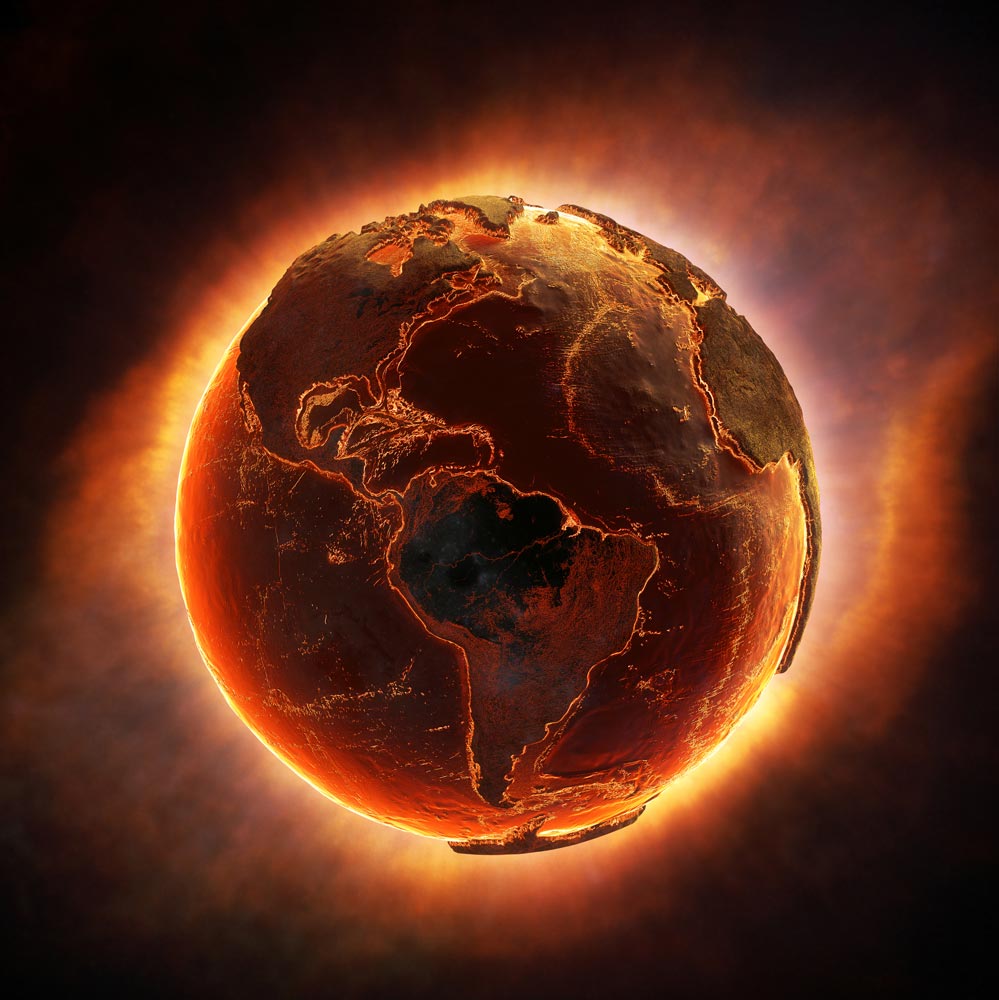
Paleo-climate researchers (those who study the climate records of the prehistoric periods) have been doing some interesting work. Given the onset of anthropogenic global warming, there is a search to find out what happened to the world during previous periods of severe global warming.
http://www.nature.com/news/longest-historic-temperature-record-stretches-back-2-million-years-1.20673
Carolyn Snyder, director of the Climate Protection Partnerships Division of the US Environmental Protection Agency in Washington DC, used ocean sentiment cores to put together a comprehensive study of historic temperatures, going back 2 million years. As a part of this study, Snyder used Antarctic ice cores and ocean sentiment cores to examine past episodes of global warming. She sought to ascertain the historical relationships between the amount of carbon dioxide in the atmosphere and its associated average global temperature. Among Snyder’s conclusions, she found that the current amount of carbon dioxide in the atmosphere would imply a further 7 degree Celsius increase in average global temperatures. She does not postulate on what mechanisms might cause this rise. However, a different study provides some interesting insight into this question.
http://topdocumentaryfilms.com/day-earth-nearly-died/
In 2002, a documentary was made about research that was done on the climate conditions that existed during the Permian period mass extinction. 250 million years ago, during the Permian Age, massive global warming occurred that killed 95% of life on land. The oceans suffered acidification due to the large amount of carbon in the air, resulting in death of most marine life as well.
The researchers came to the conclusion that massive volcanic eruptions released sufficient carbon dioxide to cause atmospheric temperatures to increase by up to 5 degrees Celsius. Further more, they concluded that this warming then triggered a massive release of methane, which then caused a further 5 degrees increase in atmospheric temperature. It was this one-two punch that ultimately killed over 95% of life on Earth.
Though the world was a much different place 250 million years ago, the one-two punch of the Permian Age global warming may be surprisingly relevant to the current bout of global warming. Rather than a massive series of volcanic activity in Siberia spewing carbon dioxide into the air, we substitute man’s activities. Man is currently putting out almost as much carbon dioxide into the air as the Siberian volcanoes did 250 million years ago. The amount of carbon currently in the atmosphere is associated with a much higher level of average global temperatures than currently exists — however, I would argue that we will catch up shortly.
The initial increase of atmospheric temperatures is only the first step in a Permian-type catastrophic rise in global temperatures. Once atmospheric temperatures rise, then oceanic water temperatures follow — this is the second step. As both atmospheric temperatures and oceanic temperatures rise in tandem, the polar ice, in both Antarctica and the Arctic, start to thaw — this is the third step. The melting of the polar ice creates a freshwater layer in the ocean, which serves as lid. This lid grows until it prevents ocean mixing, which results in a further warming of the world’s ocean — the fourth step. The fifth step is when the methane hydrates, found in the world’s oceans, and the methane frozen in the permafrost, begin to melt, releasing methane into the atmosphere. The release of methane causes global warming to accelerate, causing the Arctic polar cap to melt and completely disappear. Once the Arctic polar ice cap is gone, the Arctic will warm at an even faster rate, until the vast amount of methane trapped in permafrost — both on land and under the East Siberian Sea — is release. This is the sixth stage, where an explosive wave of methane is released from the Arctic, which triggers the catastrophic stage of global warming — and which brings about the manifestations of the Sixth Seal in Revelation.
In the End of Days, science is truly a friend of faith, as it is completely supportive of the prophecies found in the Book of Revelation.
